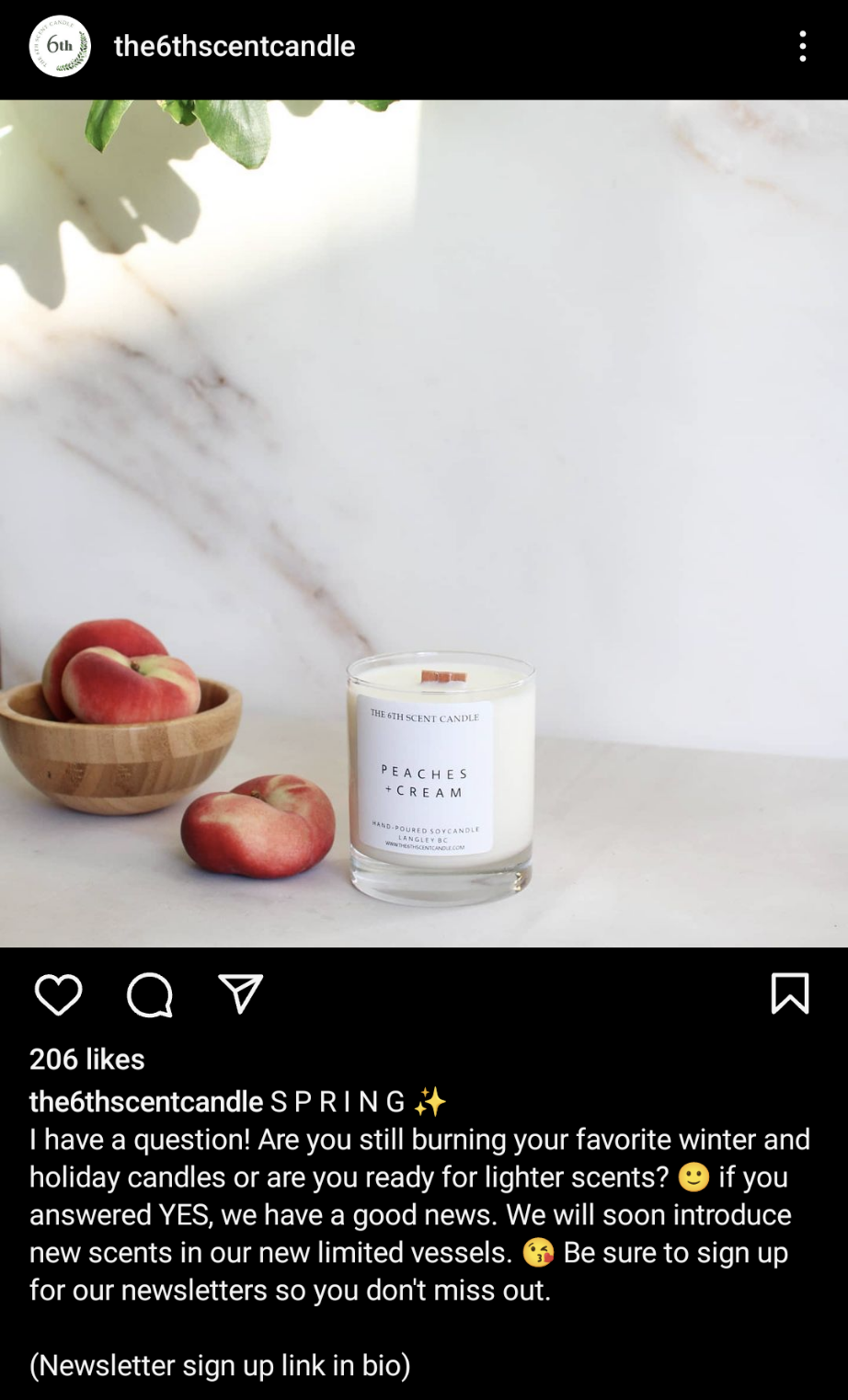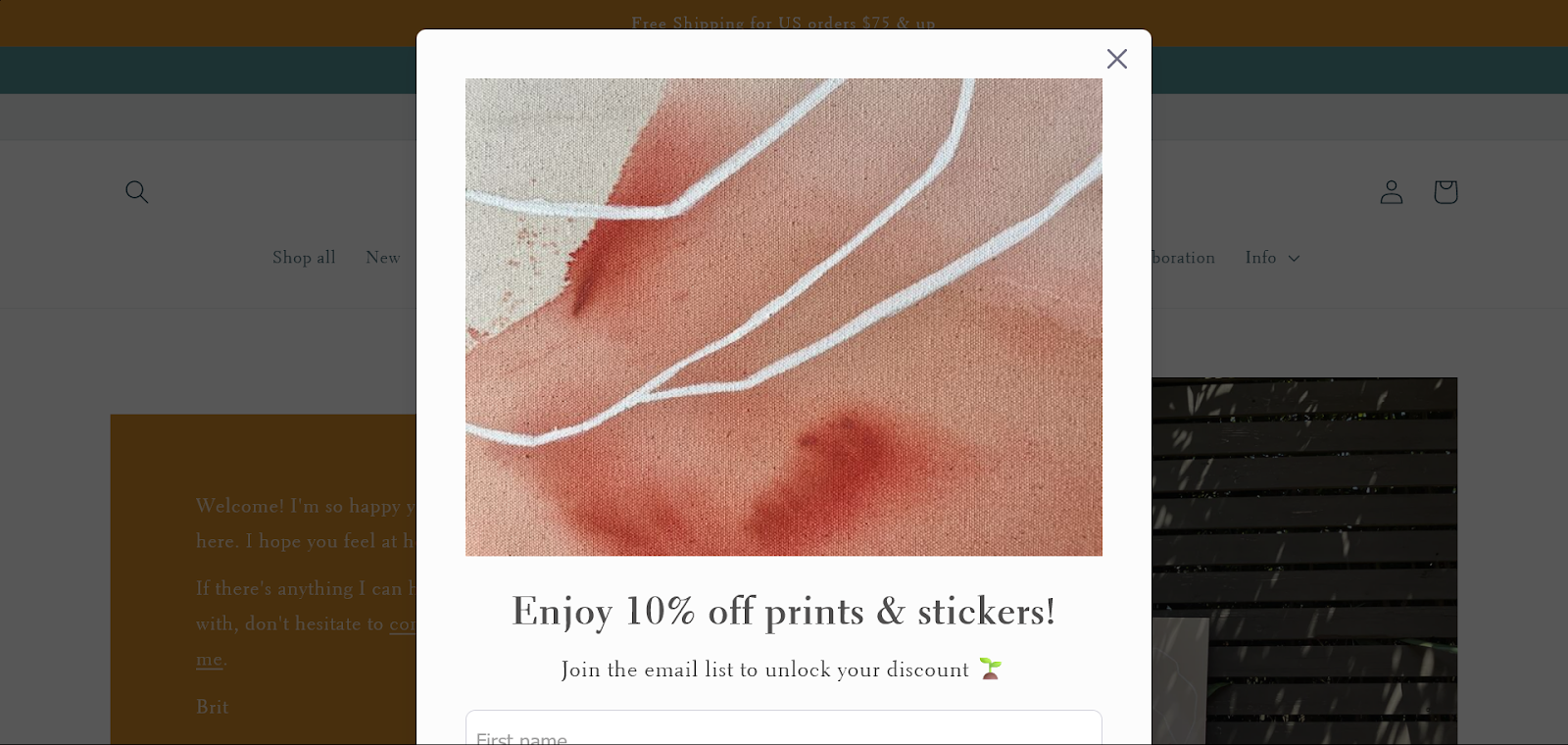
Learning how to grow your email list is one of the most important parts of creating a successful email marketing strategy. And for some, it’s also one of the most challenging.
You know you have something valuable to offer through your email content, but how do you get people to subscribe to these messages? Fortunately, there are many tactics you can try. Some of these are real marketing examples from small businesses and organizations that have achieved email marketing success. They’ve cracked the “email list growth” code, and you can, too.
What is an email list?
An email list is a collection of email addresses a company can send marketing messages to. Typically, people land on email lists voluntarily by opting in or subscribing — that means they’ve shared their contact info via a landing page or a sign-up form.
Write engaging content that generates organic growth
Sending well-written, interesting, and relevant content helps you hold onto existing subscribers and attract new ones.
Examples of engaging email newsletter content include but aren’t limited to:
- Helpful messages: How-to guides and video tutorials often fall into this category. But helpful messages can be anything that teaches readers about your product or service, from the best ways to use them to new developments in your industry.
- Promotions: Promotional emails spread the word about things like new product announcements and upcoming events.
- Informational content: The purpose of these emails is to educate about your business or industry. Informational messages might include a behind-the-scenes look at your company, case studies, or blog posts.
Make it easy for your subscriber to share your emails
The odds are high that your contacts’ friends have similar interests. So, they’ll probably like what you have to offer, too. Encourage your email list subscribers to share your messages with their friends, and make it easy for them to do so.
Add social media sharing buttons in each of your messages and an “Email to a Friend” link that enables readers to forward the email to someone they know. When they share, you gain access to your recipients’ contact lists and plenty of potential subscribers.
Use segmentation to make your emails more relevant
People are more likely to open an email if its subject matter is specifically geared toward them and their interests. Segmenting your audience — which means splitting them into groups based on characteristics like location, buying habits, or gender — makes it easy to send more targeted content.
Strategically segmented contact lists help you determine which groups of people need which information. Simply put, segmenting your emails puts the right content into the right hands.
Use social media for email list growth
To promote your email list on your social media, encourage people to sign up for your newsletter through your posts. For example, this can look like linking your lead generation landing page in your profile bio or including a sign-up CTA at the end of your video content. You might also preview newsletters on your stories or in captions and require viewers to sign up to read the full post.

Add an email signup link to the company’s email signatures
Most businesses usually have an automated signature tacked on the end of every email they send.
Adding a call to action — a link urging the recipient to join the mailing list, for instance — to your already-existing signature is wise. This spurs the sender-recipient relationship along even after the conversation is over.
Offer a free tool or bonus content for people who sign up for email
It’s a known fact: Everyone loves free stuff! That’s why offering a product or service free of charge is an effective incentive for email list subscribers.
Write a blog post offering advice on a subject related to your business and offer more in-depth bonus content to those who submit their email addresses. Or, create a digital guide related to your goods and services and make them exclusive to email list subscribers.
Encourage in-store email signup
Asking for sign-ups in person is perhaps the simplest way to build your email list. When they visit your storefront, have customers write their contact information on a paper sign-up sheet or enter it into a tablet.
Use a paper sign-up sheet
A paper sign-up sheet isn’t the most high-tech choice. However, it is one of the most effective ways to grow your email list, especially if you run a brick-and-mortar location and interact with customers face-to-face.
The trick here is to make the benefit of subscribing to your email list clear. Add a sentence or two at the top of the opt-in form to tell subscribers why signing up will be valuable to them. Will they receive special offers? Will they be the first to know about your new inventory? Let them know!
Use an app
Don’t fret if collecting emails with pencil and paper sounds too old-school for you. There’s an app for that — several, actually.
Once you download a list-building app, strategically place tablets near the checkout or other high-traffic spaces for customers to enter their contact information. Some apps even allow you to streamline collection and list management by letting customers choose which lists they’d like to be added to based on factors like email frequency or newsletter topic.
Add share and join list buttons to your email
This often-overlooked list growth tool can be your best source of new leads. Why? Because not everyone who sees your email will be on your email list. Besides, leads who arrive via existing customers are more likely to trust your brand before you’ve even had the chance to nurture them.
Include a simple prompt — a share button, for instance, as those especially stand out — encouraging readers to pass your email content to their email contacts and social media followers.
Don’t forget to provide a straightforward way for new readers to join your list. Something like a prominently displayed “Join list” button works. Link it to a landing page that allows readers to quickly submit their contact information.
Run lead-generation ads
Paid advertising offers an excellent means of attracting attention from qualified leads. Various social media platforms — Facebook, Instagram, and LinkedIn, for instance — offer you the opportunity to use this tactic.
The platforms you rely on will largely depend on your industry and target audience. But wherever your ads are displayed, they should direct users to relevant landing pages. Once they arrive at those pages, users can complete sign-up forms to join your email list.
Put a sign-up form on your website
Your website is often the first contact many people have with your business. Create a chance to stay connected with new visitors by adding a sign-up form to your site.
Sign-up forms come in all shapes and sizes, including:
- Pop-up forms: As their name suggests, these forms pop up for website visitors. Pop-ups are excellent tools for grabbing potential customers’ attention.
- Flyouts: Flyout sign-ups instantly attract attention, as they slide into view from the top, bottom, or even the side of the page. Unlike pop-ups, they allow website visitors to continue browsing the page before they sign up or exit.
- Banners: Simple yet distinctive, a banner display stretches across the top or bottom of your web page to encourage visitors to join your email list.
- Inline forms: An inline solution is probably your best bet if you have a specific vision for your sign-up form’s function and location. These types of forms are embedded within your site’s content.

No matter which style you prefer, your email list sign-up form should highlight the advantages of subscribing to messages from your business.
Bonus: Get more email signups for free with Nift
Thanks to our partnership with Nift, you can power your sign-up form by offering a $30 Nift gift card as a thank-you to anyone who subscribes to your newsletter. This is an incredible, no-cost way to boost your email subscriber numbers. Nift gift cards can be used nationwide to purchase wine, food delivery, clothing, and more.
It takes less than five minutes to add $30 Nift gift cards to your sign-up forms and set up automated welcome emails. And if you’re using Constant Contact for your email marketing, sending Nift gift cards is always free.
Collect email addresses when people sign up for an event
When you host an event that requires registration or advance ticket purchases, you’re already collecting important contact information. You might as well kill two birds with one stone and ask people to join your email list now, too.
Collect email addresses at industry tradeshows
Industry events like tradeshows and conferences are perfect places to grow your email list. After all, if a customer is attending one of these events, they’re already interested in your field.
Mother Earth Pillows is but one of the many businesses that use this strategy to grow their email marketing lists.
“We have sign-up lists at conferences, we have one at our store, and we have a sign-up list on our website. Then we have the people who call in or are our wholesale partners,” explains founder, Karen Kowal.
Look to your existing database
Emailing contacts from your already existing database — colleagues, friends, and family members — is an easy way to beef up your email list. Just don’t forget to ask their permission before you start sending them your marketing emails to subscribe to, share, and draw feedback from.
Ask at events
Any face-to-face interaction with a customer is an opportunity to add to your list of email contacts.
Gallery Above Penn Square takes full advantage of this strategy. The organization hosts a full schedule of weekly events and finds that asking people to sign up for emails is an easy way to continue the relationship.
“When people come in, we always ask if they’d be interested in receiving emails about future events,” explains gallery and event coordinator Anca Bala. “It’s a really easy way to get people to sign up so we can stay in touch with them after an event is over.”
Use a postcard
Boston-area restaurant In a Pickle asks customers to join their email list via postcards on dining room tables.
“We have postcards in the restaurant that you can sign up with that say, ‘Join our email club!’ and talk about how we offer a lot of vouchers, coupons, free drinks, free parties, and contests through our email,” explains owner Tim Burke.
If the idea of letting people sign up by hand is appealing but you don’t have a convenient place for a paper sign-up sheet, take a cue from In a Pickle and use a postcard or other printed material to build your contact list.
Add a sign-up option to your membership forms
Membership-based businesses and organizations ask people to submit contact information when they sign up. Why not take that opportunity to encourage mailing list sign-ups, too?
Add an additional field for email subscription sign-ups on your enrollment form or ask people face-to-face when they come into your location to join.
It’s a simple tactic, but it works, according to River Rock Climbing Gym.
“One of the first things we did was to start collecting email addresses through social media,” explains operations manager, Jared Rigby. “But we also started collecting email addresses whenever someone would come into the gym. Our last email we sent to just under 9,000 people.”
Use QR codes on your printed media
The QR code gives potential contacts a means of joining your email list with their smartphones. Making one is easy with a QR code generator like:
- Create a QR code with WooCommerce
- Canva’s in-design QR code generator
- QR Code Generator
- goqr.me
- QRstuff
- QRCode Monkey
- Delvir
Create a lead generation landing page, copy the URL, and paste it into the code generator of your choice. And just like that, you’ve got a QR code for current and prospective customers to scan.
There are three types of QR codes for you to choose from: standard, framed, or customized.
Standard QR code
Standard QR codes are the familiar dots and lines contained within a square shape.
Framed QR code
Framing a QR code helps make it stand out from the surrounding noise while being straightforward about what you want viewers to do.
Customized QR code
Make your QR code unique by changing the background and code colors, selecting codes for specific data types, customizing the eyeball shapes and frame shapes, or incorporating logos.
Not all QR code generators have the same options. So, if you don’t get the style from one, try another. After achieving your desired result, copy and paste the image into any form of media you’d like. Putting it in all your print media — business cards, flyers, and even your paper sign-up forms — is a good idea.
A/B test email marketing campaign elements
In short, A/B testing is comparing two versions of something to see what performs better.
Make A/B testing part of your email marketing strategy to ensure the content you send is something your target audience can relate to.
Elements to test:
- Subject line
- Body copy
- CTA
- Design elements
- Imagery
Feature a customer review on your sign-up landing page
It’s one thing for customers to hear how valuable your content is from your business. It’s another for them to hear it from their peers. That’s where customer reviews come in.
Ask existing email subscribers to review your content and your company. Then, feature a piece of positive feedback or two on your landing page so prospective customers can see what others think of your messages.
Host a webinar
Hosting a webinar is an effective means of bringing your email list subscribers up.
A well-planned webinar is an excellent avenue for providing your target audience with valuable information. When you show off your knowledge during the webinar, attendees know you’re trustworthy and credible. As a result, you’ll encourage them to want more insights from your company.
Grow your email list
Think of all the ways your customers interact with your business. Then, decide which of these strategies will work best for you and select one or two to help get you started on growing your email list. Next, scale up your email marketing efforts through Constant Contact. Create sign-up forms, collect subscriptions, craft emails, and gain access to detailed reporting tools to help you engage your audience and turn more leads into paying customers.




